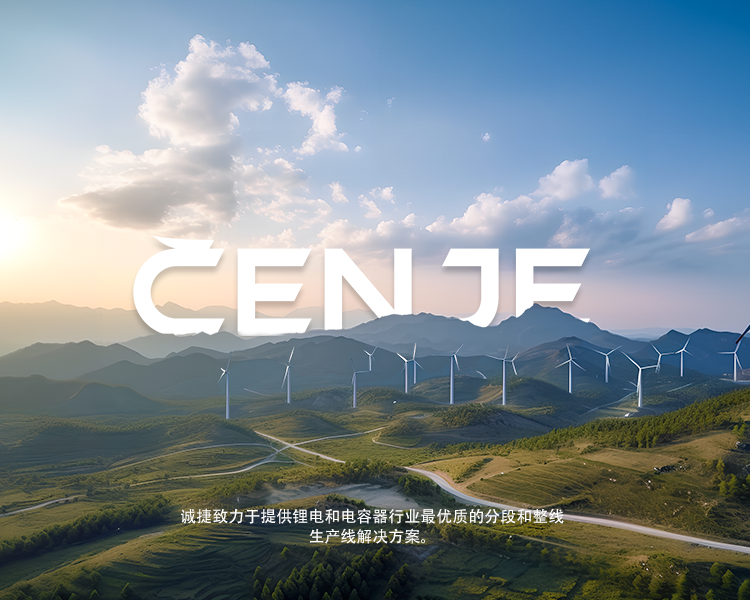

Views: 0 Author: Site Editor Publish Time: 2025-04-22 Origin: Site









The lithium battery winding machine is an essential piece of equipment in the production of lithium batteries. This machine is responsible for winding the battery’s separator and electrode materials together, creating the necessary layers for the battery to function properly. As the demand for lithium batteries continues to grow, the technology behind these machines has also evolved, leading to new innovations that improve efficiency, precision, and overall performance. In this article, we will explore the latest advancements in lithium battery winding machines, their benefits, and how they are shaping the future of battery production.
The lithium battery winding machine is a critical component in the production of lithium batteries. It is responsible for winding the separator and electrode materials together to create the necessary layers for the battery to function properly. The winding process is crucial as it determines the battery’s performance, capacity, and lifespan.
During the winding process, the separator and electrode materials are fed into the machine and wound together in a precise manner. The machine uses advanced technology to ensure that the materials are wound tightly and uniformly, creating a compact and efficient battery. The winding process also involves cutting, stacking, and aligning the materials to ensure that they are in the correct position for the next stage of production.
The lithium battery winding machine has evolved significantly in recent years, with new technologies being introduced to improve efficiency and precision. These machines are now capable of producing high-quality batteries at a much faster rate, making them an essential tool for battery manufacturers.
The lithium battery winding machine has seen significant advancements in recent years, with new technologies being introduced to improve efficiency and precision. One of the latest innovations in this field is the introduction of robotic arms in the winding process. These robotic arms are used to handle the separator and electrode materials, ensuring that they are wound tightly and uniformly. This technology has improved the accuracy and speed of the winding process, resulting in higher quality batteries.
Another innovation in the lithium battery winding machine is the use of artificial intelligence (AI) and machine learning. These technologies are used to monitor and analyze the winding process, allowing for real-time adjustments to be made. This has resulted in improved efficiency and reduced waste, as the machine can now detect and correct any issues in the winding process.
In addition to these advancements, there have been significant improvements in the materials used in lithium battery winding machines. New materials, such as carbon fiber and nanomaterials, have been introduced to improve the performance and lifespan of the batteries. These materials are lighter, stronger, and more efficient than traditional materials, making them an ideal choice for battery production.
The advancements in lithium battery winding machines have brought about several benefits for battery manufacturers. One of the most significant benefits is the improved efficiency of the winding process. The use of robotic arms and AI technology has reduced the time and resources required to produce high-quality batteries, resulting in cost savings for manufacturers.
Another benefit of advanced lithium battery winding machines is the improved accuracy of the winding process. The use of new technologies has resulted in tighter and more uniform winding, which has improved the performance and capacity of the batteries. This has also resulted in longer battery lifespans, which is a significant advantage for end-users.
In addition to these benefits, the advancements in lithium battery winding machines have also resulted in reduced waste and environmental impact. The new technologies used in the winding process have reduced the amount of materials wasted, resulting in a more sustainable production process.
The advancements in lithium battery winding machines have paved the way for a more efficient and sustainable future in battery production. As the demand for lithium batteries continues to grow, it is expected that new technologies will continue to be developed to improve the winding process.
One area that is expected to see significant advancements is the use of AI and machine learning. These technologies will continue to evolve, allowing for even greater efficiency and precision in the winding process. Additionally, the use of new materials, such as graphene and silicon-based materials, will further improve the performance and lifespan of the batteries.
In conclusion, the latest innovations in lithium battery winding machines have brought about several benefits for battery manufacturers, including improved efficiency, accuracy, and reduced waste. As the demand for lithium batteries continues to grow, it is expected that new technologies will continue to be developed to improve the winding process. The future of lithium battery winding machines looks promising, with advancements in AI, machine learning, and new materials expected to revolutionize the industry.

